Bands of Color
This exercise is designed to hone your wash-laying skills in the form of single strokes of color laid down side by side in whatever pattern your first stroke takes. The object is to concentrate on the white line you are forming between each stroke. Try not to touch any previous strokes, keeping the white lines of unpainted paper unbroken. Mix several puddles of different colors on your watercolor palette. I used a round #10 red sable for most of this exercise. A round #4 red sable was used to add smaller variations in the gaps. A larger brush that holds more paint will allow you to make longer continuous brush strokes. Fully load or "charge" your watercolor brush with paint, then, starting at an edge of your paper, paint a winding line of color across the page. Keep the width of the brush stroke as consistent as you can. You can recharge your brush as needed and pick up where you left off. 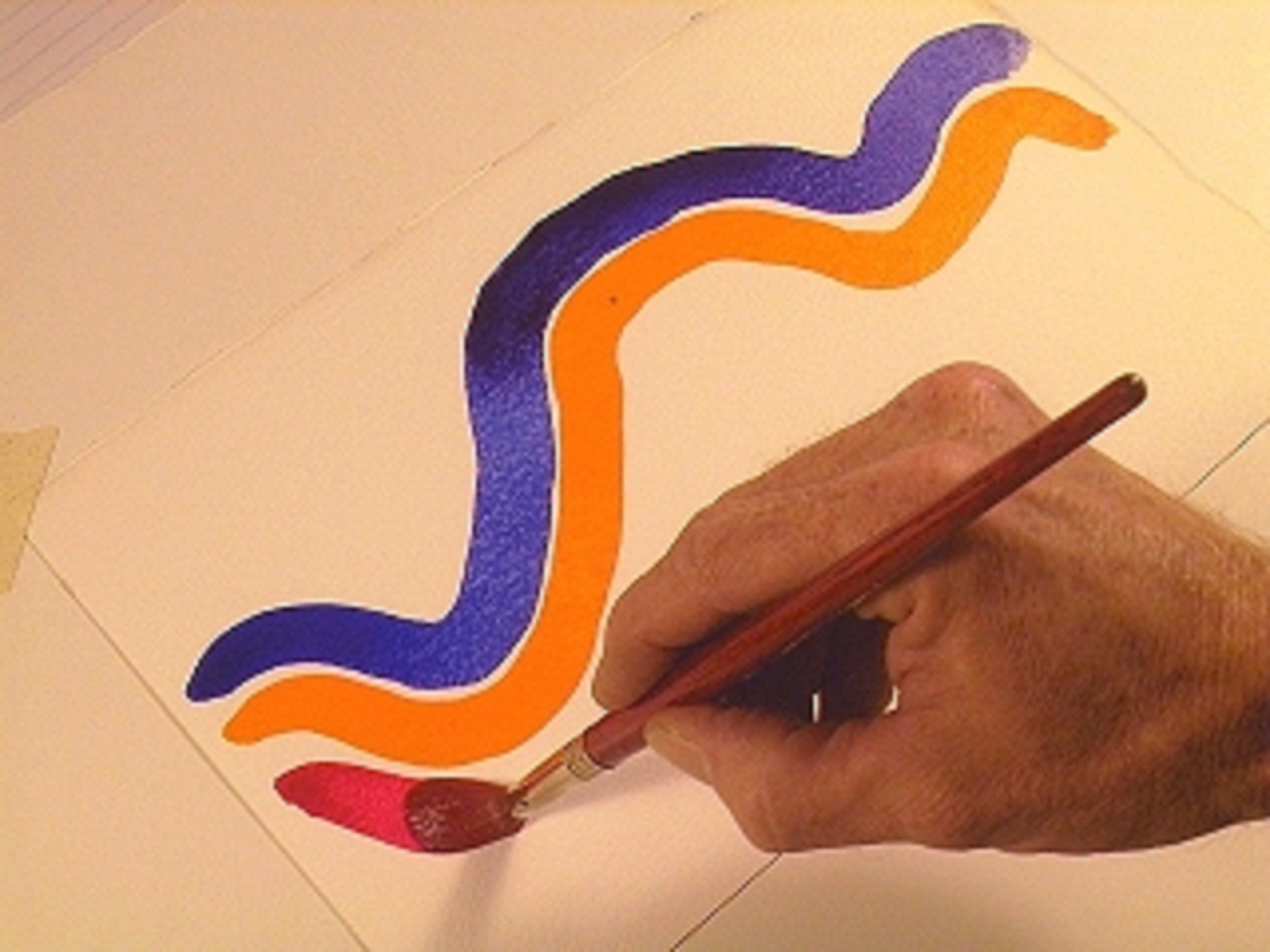 While the last stroke is still wet, rinse out your brush and grab the next color. Start pulling another linear stroke next to last one painted. Follow parallel with the previous stroke as it snakes across your page. Do not let the washes touch. Leave white paper between each stroke. This is the time to be daring...try to get as close as you can to the previous stroke. How thin can that white stripe get?
While the last stroke is still wet, rinse out your brush and grab the next color. Start pulling another linear stroke next to last one painted. Follow parallel with the previous stroke as it snakes across your page. Do not let the washes touch. Leave white paper between each stroke. This is the time to be daring...try to get as close as you can to the previous stroke. How thin can that white stripe get? 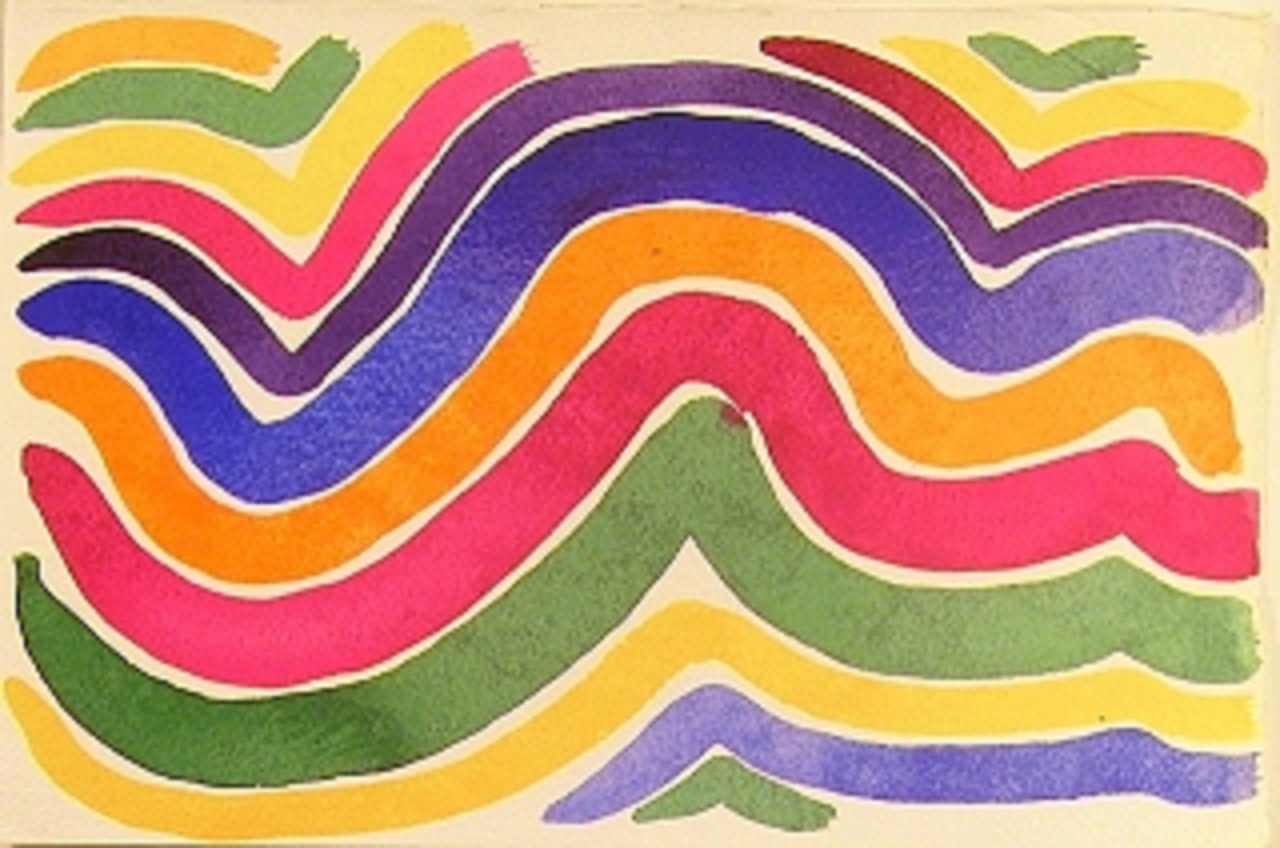 Repeat as necessary with different colors until you've filled the paper, then rinse. This exercise requires a certain steadiness of hand to do without letting the washes touch as you maneuver across your paper. This is the hunting ground of the "happy accident" where an unintended painting event dictates your next move aesthetically. I think I scored about 92%. Close enough for rock 'n' roll.
Repeat as necessary with different colors until you've filled the paper, then rinse. This exercise requires a certain steadiness of hand to do without letting the washes touch as you maneuver across your paper. This is the hunting ground of the "happy accident" where an unintended painting event dictates your next move aesthetically. I think I scored about 92%. Close enough for rock 'n' roll. 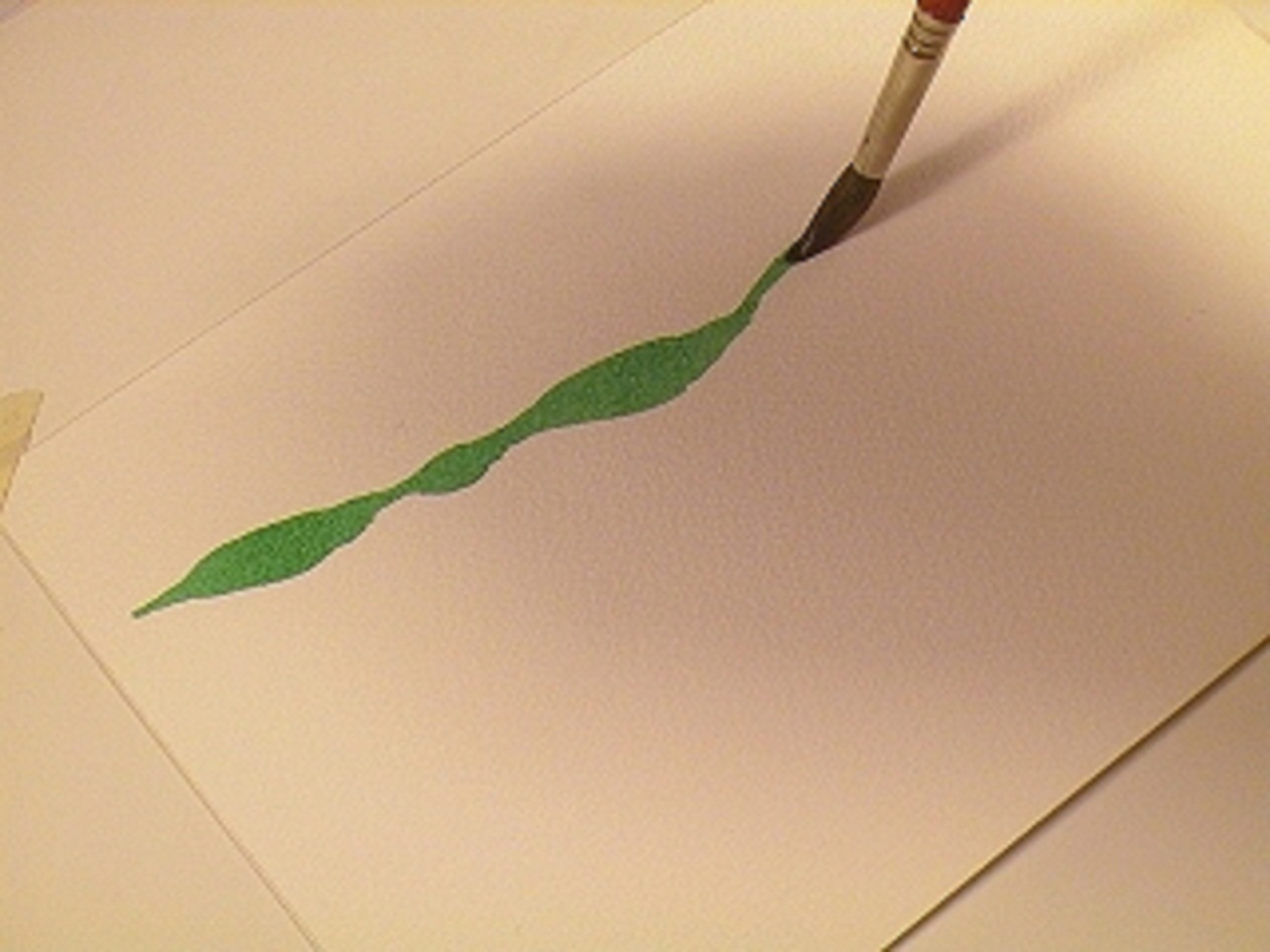
Thick 'n' Thin
Artists add interest and variety by altering the thickness in a single stroke of a flowing paint. By using the tip of your brush, you can get a fine line flowing. If you add pressure as you pull the stroke, the brush spreads and the stroke thickens. If you lessen pressure the stroke will get thinner. This exercise combines this brush skill with a twist on the Bands of Color exercise. Start by pre-mixing several puddles of different colors. Basic primary colors are fine. Make sure your brush is full but not sopping wet. Work the tip on a clean area of your palette until it comes to a satisfactory point. Starting at the edge of your paper gently pull a fine line with the tip. Start to apply pressure to the brush to thicken the stroke. Then lessen the pressure until the line thins out again. Continue this thick'n'thin stroke across the page. 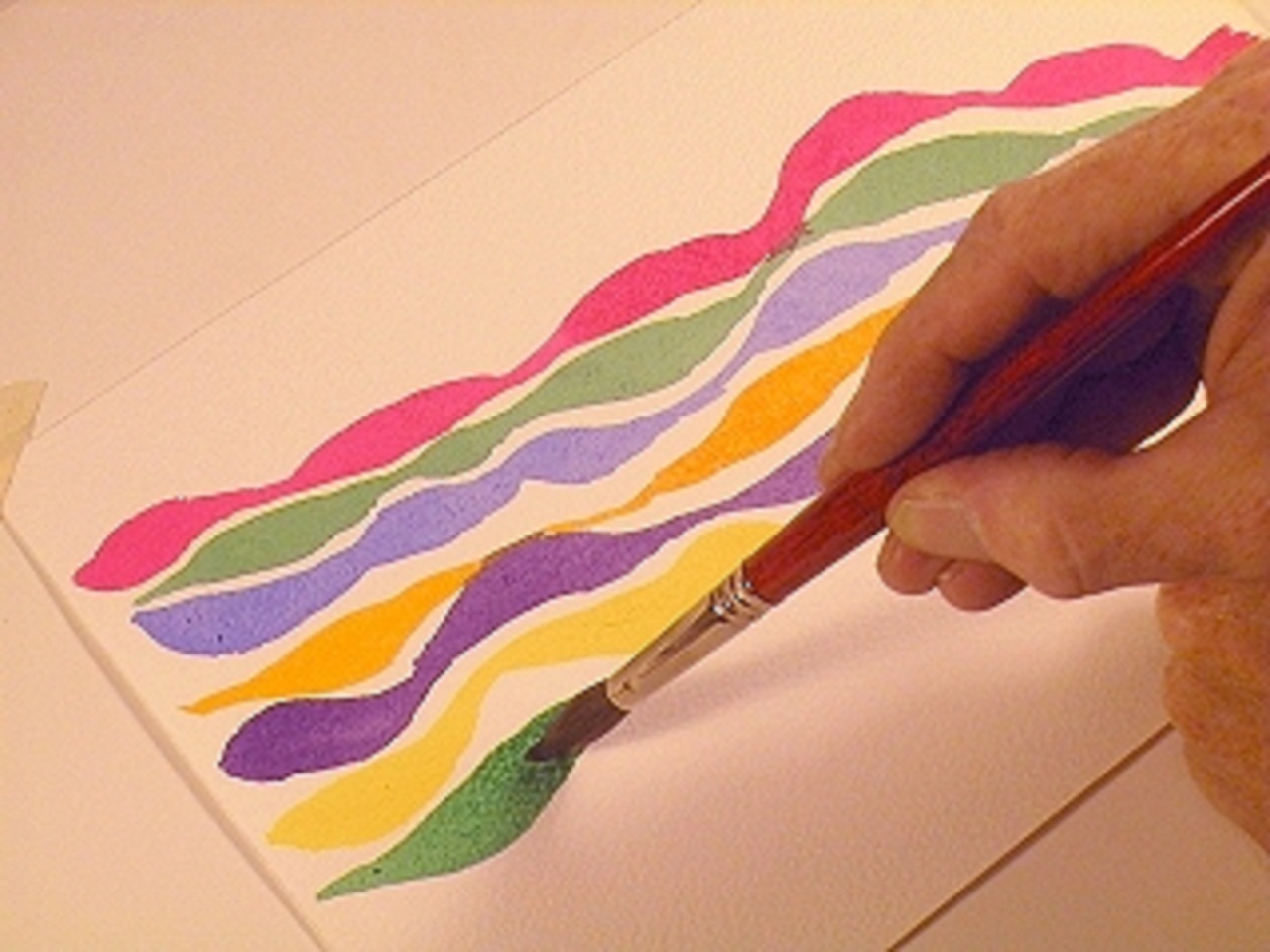 Rinse your brush and change colors. Start a new thick'n'thin stroke next to the last one. You can try to thicken your stroke where the adjacent line is thin, but in particular, avoid touching the other washes with the new colors you lay down. If your brush starts to runs dry, reload your brush from your palette and continue the stroke where you left off. You will notice that different pigments and brands of watercolor paint have different "flow" characteristics as you practice.
Rinse your brush and change colors. Start a new thick'n'thin stroke next to the last one. You can try to thicken your stroke where the adjacent line is thin, but in particular, avoid touching the other washes with the new colors you lay down. If your brush starts to runs dry, reload your brush from your palette and continue the stroke where you left off. You will notice that different pigments and brands of watercolor paint have different "flow" characteristics as you practice. 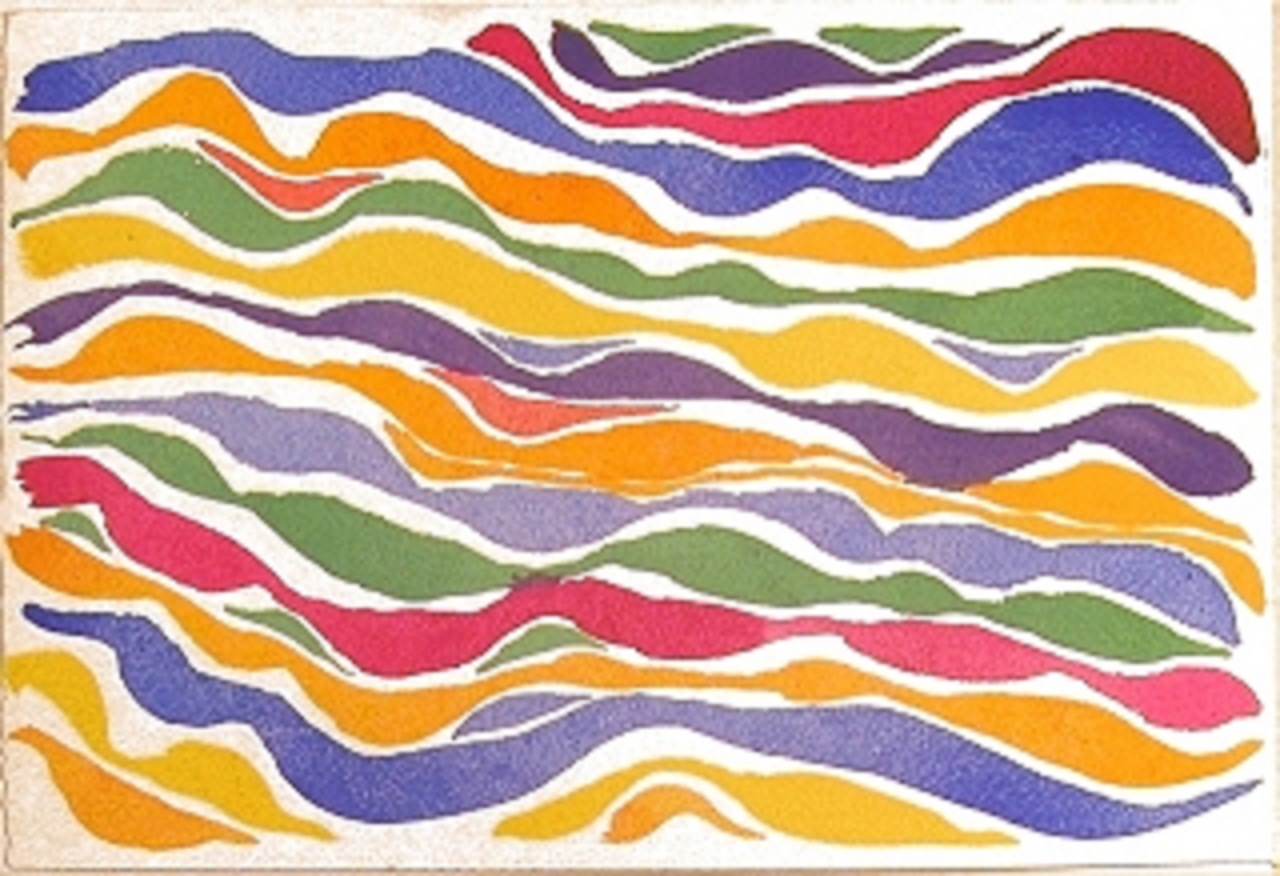 This exercise will help you learn to develop more expressive lines through brush and wash control. Being able to instinctively thicken or thin a brush stroke on command while you are painting, and have it go where you want it, is a good thing. It is a learnable skill as you will see. I used a round #10 red sable for most of this exercise, while using a round #4 red sable for smaller fill-in strokes.
This exercise will help you learn to develop more expressive lines through brush and wash control. Being able to instinctively thicken or thin a brush stroke on command while you are painting, and have it go where you want it, is a good thing. It is a learnable skill as you will see. I used a round #10 red sable for most of this exercise, while using a round #4 red sable for smaller fill-in strokes. 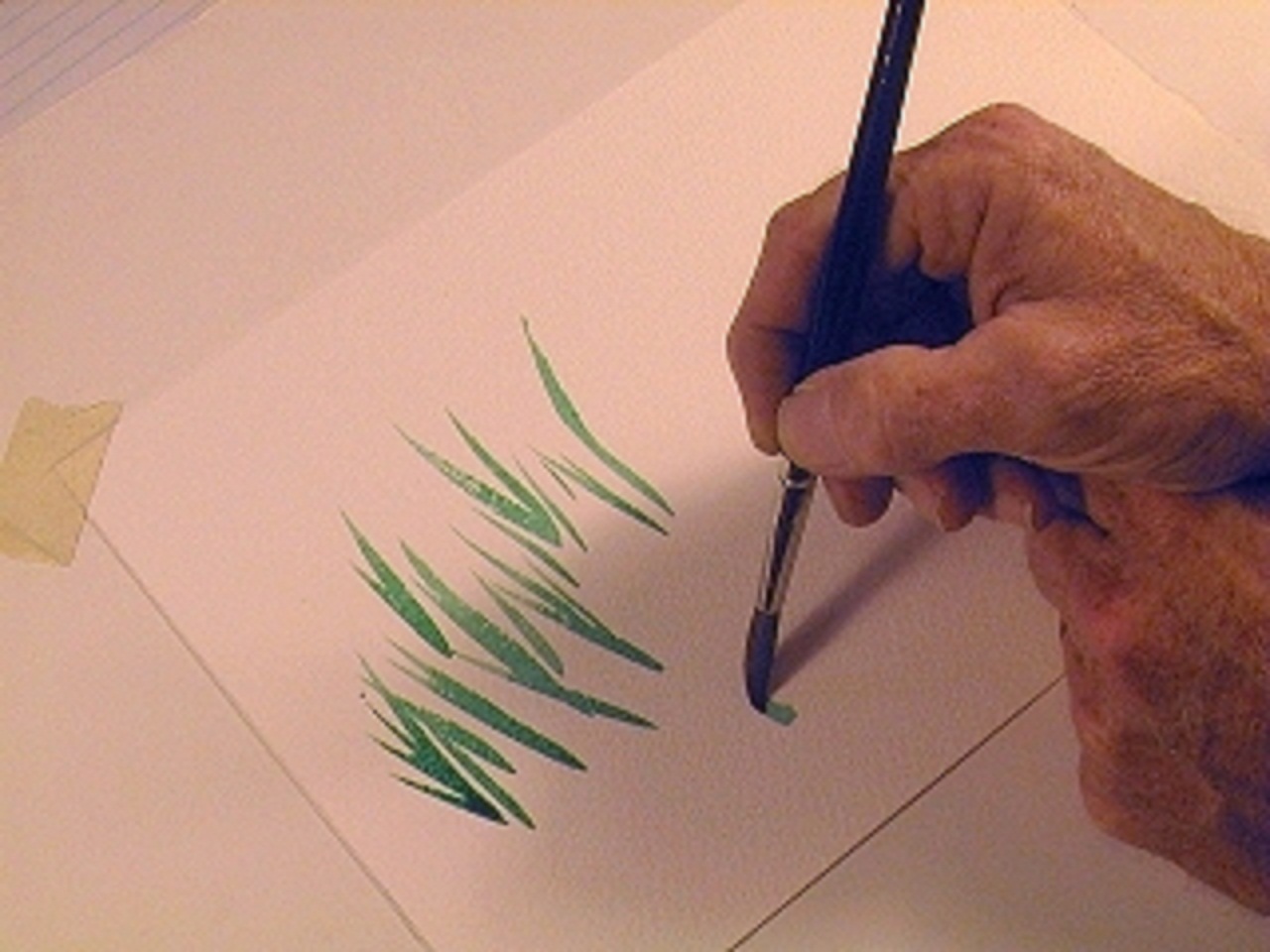
Wrist Flick
The Wrist Flick is a playful stroke that can be easily overdone. And it is sometimes overdone because the artist just couldn't get that last branch or blade of grass to lay the way they wanted. So they try again. As an alternative to screwing up an otherwise decent painting I suggest practicing and exploring this technique so you know how to do it when you need it. Screwing up while practicing is fine. Just keep practicing until you're comfortable with it. Start by preparing a few colors to work with on your palette. Mix up some medium value washes in several colors. The Wrist Flick is easily done with a decent round red sable or a rigger-style brush. Load your brush with paint and angle the tip of the brush towards you as pictured. This is the starting position for the Wrist Flick. 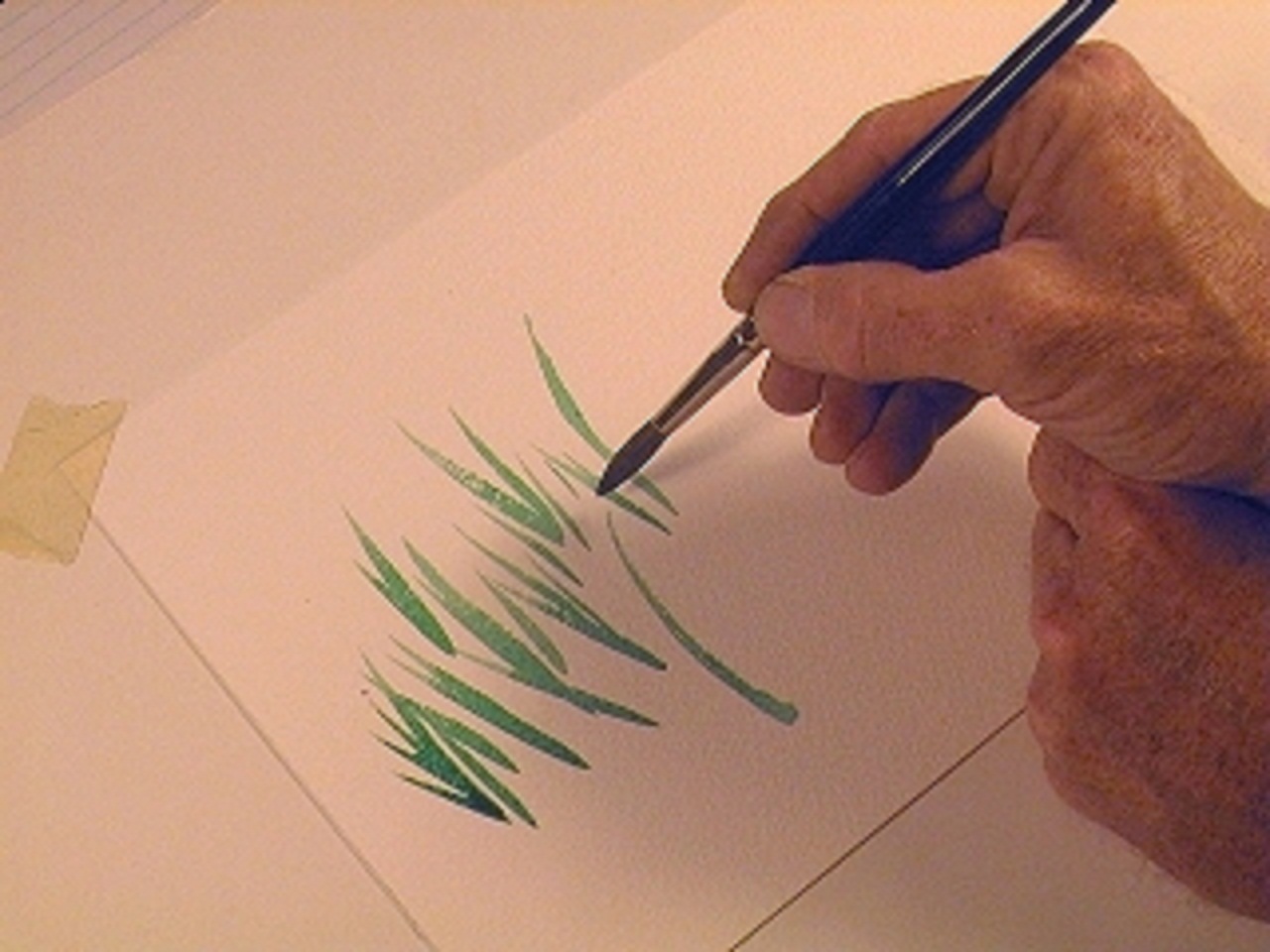 This is the ending position of the brush stroke. Pivoting from your wrist push the brush tip up and away in a "flicking" motion. The last part of the stroke flicks out in a feathery point. Practice several times in each color you have. Vary the thickness of the strokes as you try to imitate grasses, branches, or even feathers. I rested my brush hand on top of my other hand for some of the brush strokes here. Try this technique for stability and control of detailed flick strokes.
This is the ending position of the brush stroke. Pivoting from your wrist push the brush tip up and away in a "flicking" motion. The last part of the stroke flicks out in a feathery point. Practice several times in each color you have. Vary the thickness of the strokes as you try to imitate grasses, branches, or even feathers. I rested my brush hand on top of my other hand for some of the brush strokes here. Try this technique for stability and control of detailed flick strokes. 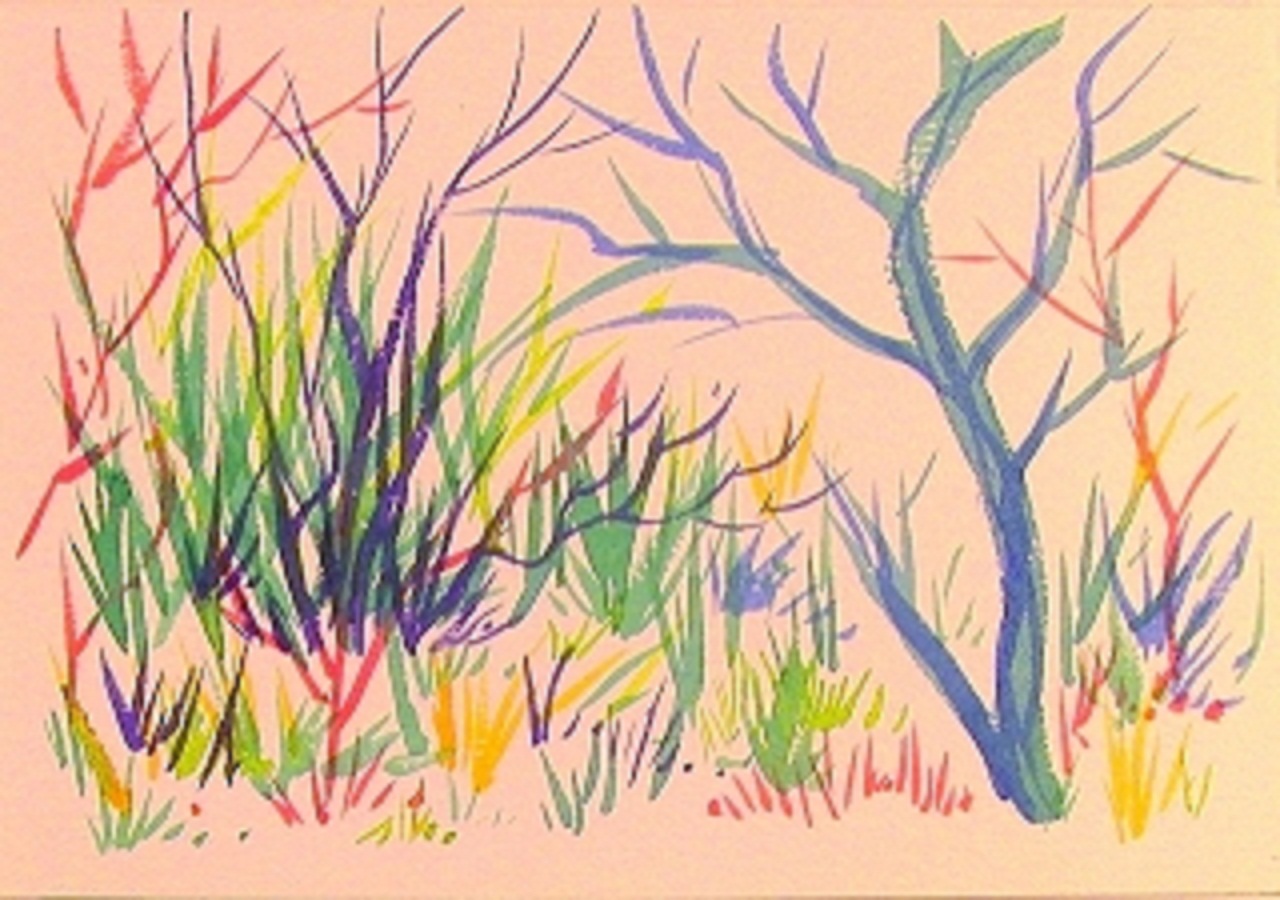 Continue practicing the stroke on your paper. You don't have to paint a scene like this one, but be aware that one may grow naturally as you practice. Along with suggesting grasses, branches, and feathers effortlessly, the Wrist Flick and variants are handy when rendering hair in portraiture or wildlife painting. A little Wrist Flicking can go a long way to finishing off a landscape painting. Too much can do a painting in before you know you've gone too far.
Continue practicing the stroke on your paper. You don't have to paint a scene like this one, but be aware that one may grow naturally as you practice. Along with suggesting grasses, branches, and feathers effortlessly, the Wrist Flick and variants are handy when rendering hair in portraiture or wildlife painting. A little Wrist Flicking can go a long way to finishing off a landscape painting. Too much can do a painting in before you know you've gone too far. 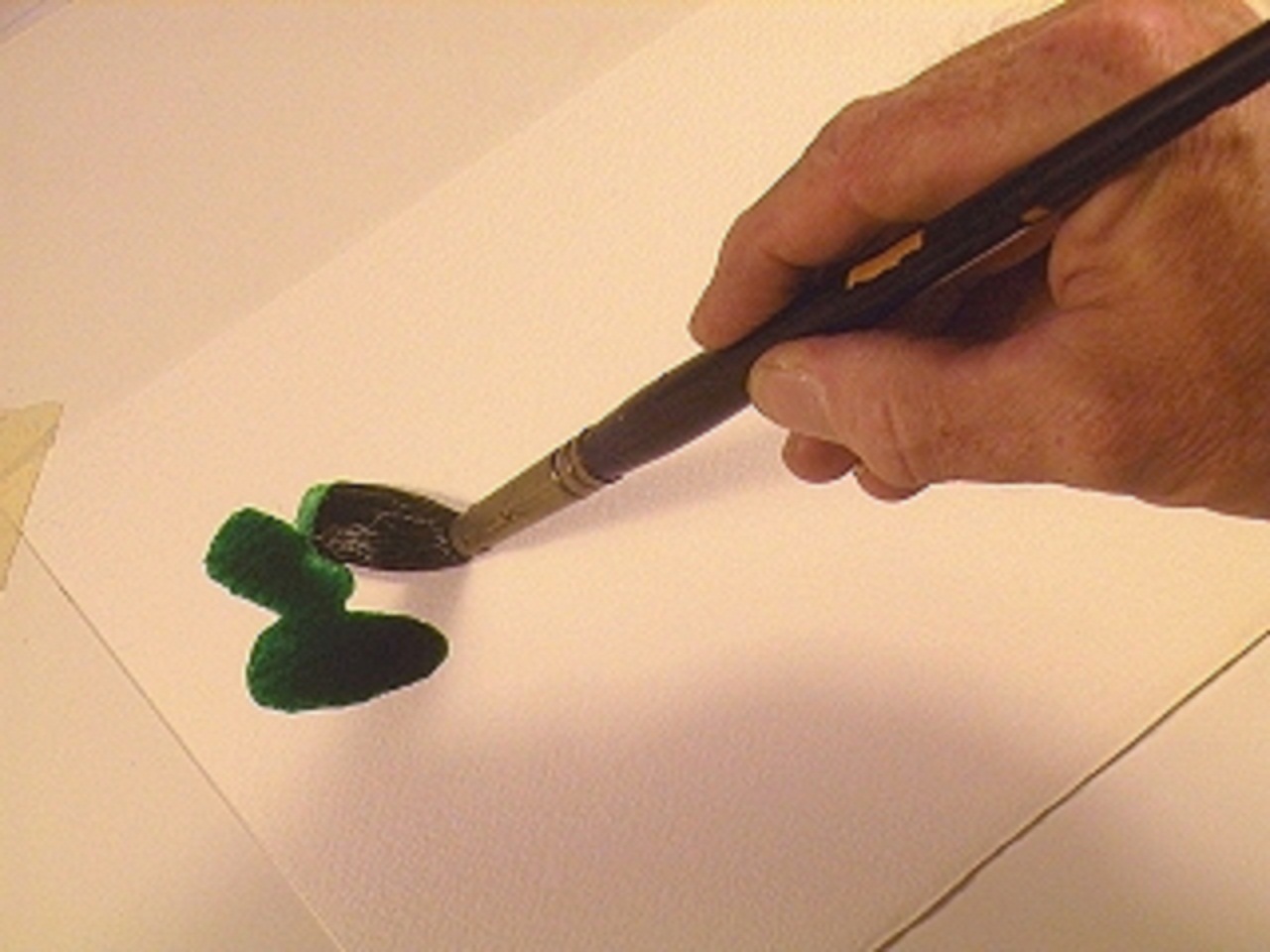
Painterly Strokes
The feel of a fully loaded watercolor brush slapping on the paper can be exciting and scary at the same instant. Being free with your brushwork and paint can be a bit intimidating at first, but it's a lot of fun. You can see the brush shape in strokes made with this brush technique. Generally speaking, any painting done in a loose and free technique would be considered a "painterly" painting. Mix up some watercolor paint on your palette in several colors that may work well together. In this exercise I used an old #12 Series 7 Winsor & Newton round red sable. Not much of a tip left but it can hold a good amount of paint and still controls well for this technique. A #7 round red sable brush was used for a few smaller strokes. Start by laying the full brush on the paper and lifting away cleanly. That is the shape of your brush fully charged. Try more short dabbing strokes across your paper. 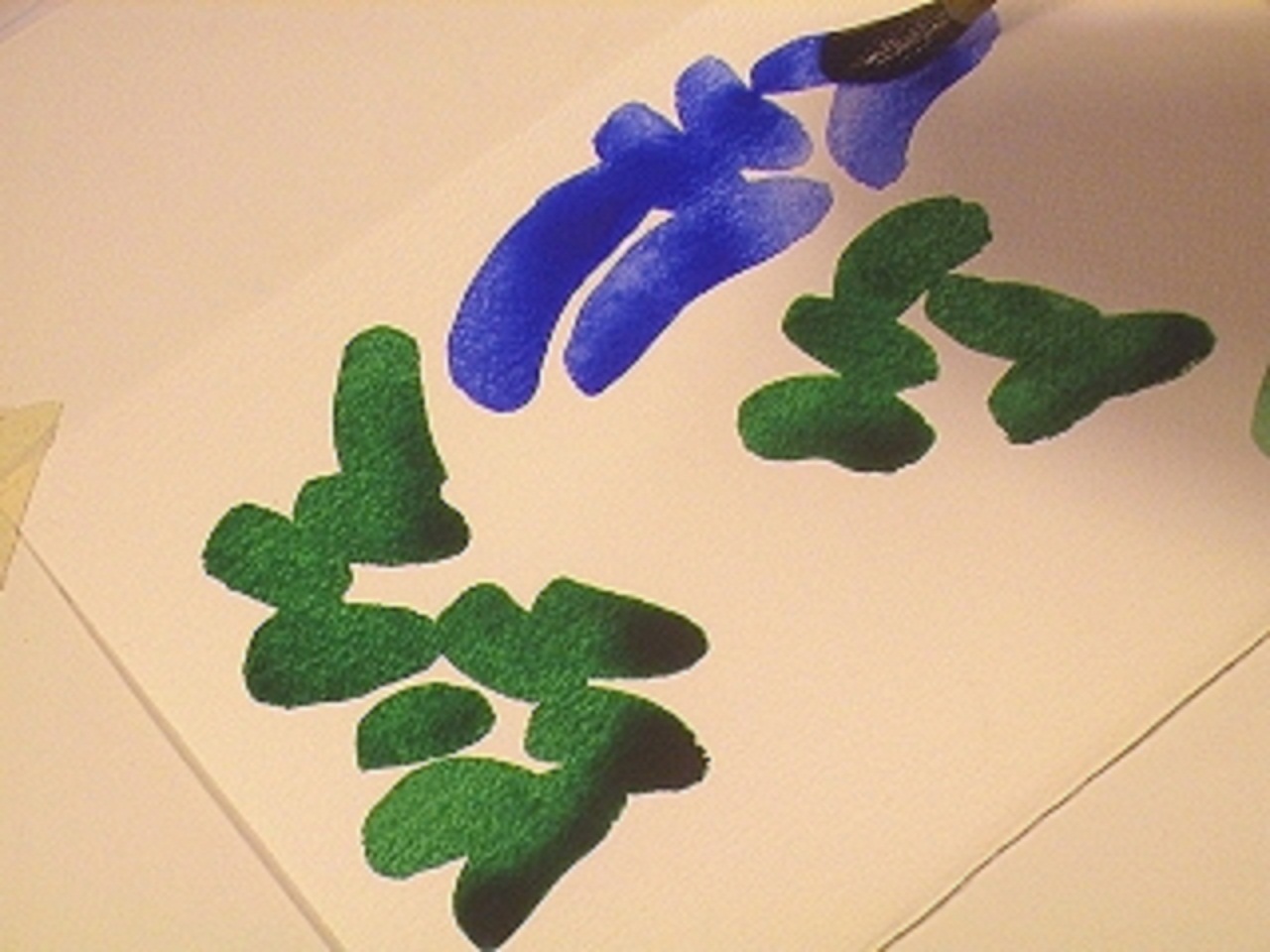 Rinse your brush and change colors. Experiment with some longer sweeping strokes. Keep your brush strokes uniform in width as you start to overlap strokes to develop shapes. Play with different groupings of brush strokes across your paper. Rinse your brush and change colors. Continue laying down similar brush strokes trying different angles of attack. Allow your wet brush strokes to intermingle as you progress.
Rinse your brush and change colors. Experiment with some longer sweeping strokes. Keep your brush strokes uniform in width as you start to overlap strokes to develop shapes. Play with different groupings of brush strokes across your paper. Rinse your brush and change colors. Continue laying down similar brush strokes trying different angles of attack. Allow your wet brush strokes to intermingle as you progress. 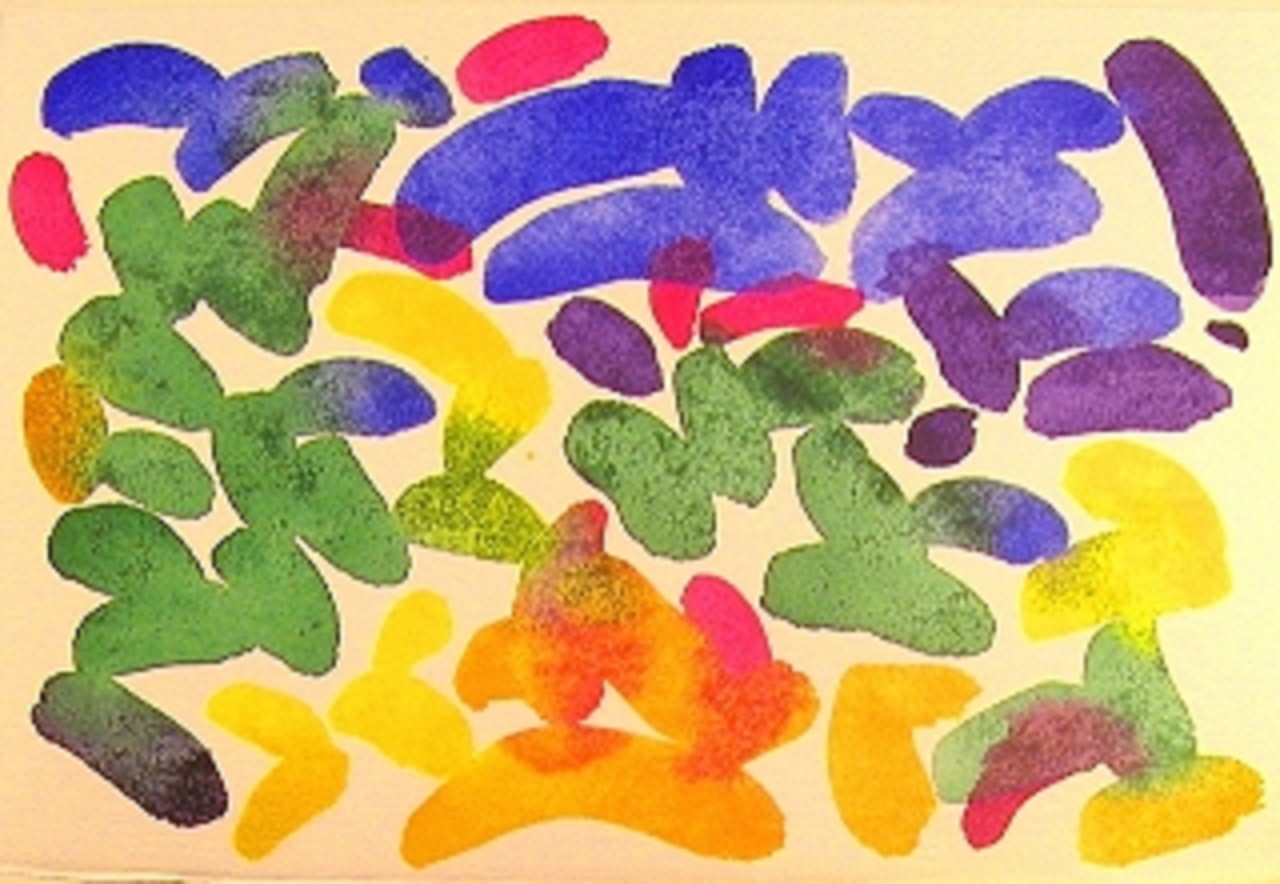 This "full brush" painterly stroke lends itself easily to landscape and watercolor gesture sketching. This brush stroke is only one of many that are considered "painterly" in quality. It is loosely based on the watercolors of Frank Wilcox, Frederick Childe Hassam, Maurice Prendergast, and Edward Hopper. Variations of painterly styles can be found in works as diverse as those of Charles Demuth, Paul Cezanne, Dong Kingman, Georgia O'Keefe, Andrew Wyeth, and John Singer Sargent, among many others.
This "full brush" painterly stroke lends itself easily to landscape and watercolor gesture sketching. This brush stroke is only one of many that are considered "painterly" in quality. It is loosely based on the watercolors of Frank Wilcox, Frederick Childe Hassam, Maurice Prendergast, and Edward Hopper. Variations of painterly styles can be found in works as diverse as those of Charles Demuth, Paul Cezanne, Dong Kingman, Georgia O'Keefe, Andrew Wyeth, and John Singer Sargent, among many others. 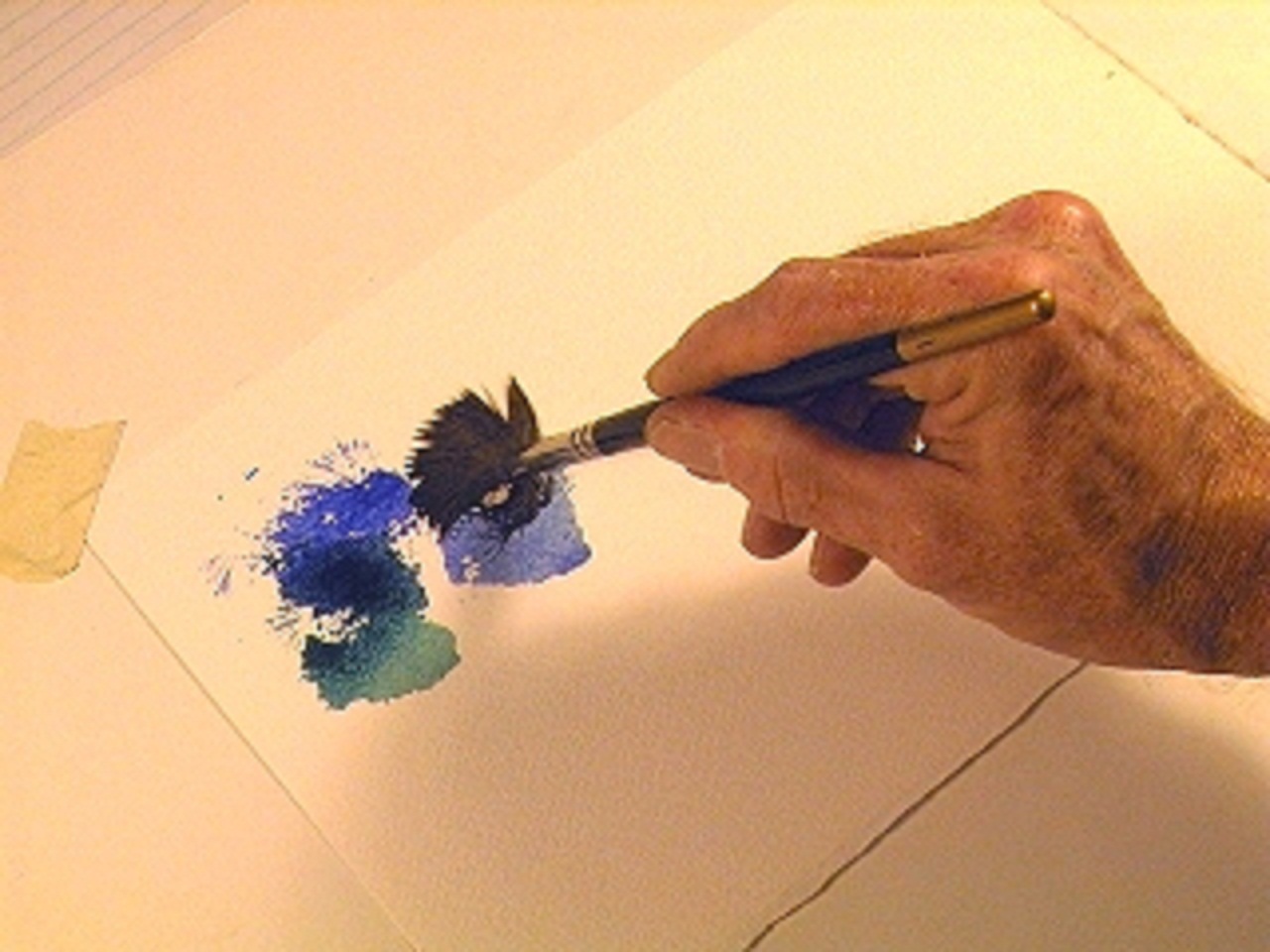
The Stab
Out of all the possible brushstrokes to be made with one simple watercolor brush, this one will make your brush cringe. Sometimes you have to use your brush in ugly ways to get beautiful texture. You will muscle through different ways of scumbling, and pushing paint as you splay the hairs of your brush in an un-nice manner. Only press to the heel of the brush hairs, don't let the ferrule mar the paper surface. Start by pre-mixing puddles of color on your palette. Due to the graphic nature of this approach (no pun intended) you may want to use an old brush to practice this technique. Load your brush with color and take a gentle "stab" at the paper. Watch your brush and notice the fanning pattern of the hairs as you push it into the paper. Although it looks otherwise, this is not a violent stroke. You have no intent but to find some new technique. Notice the steeper angle of attack. 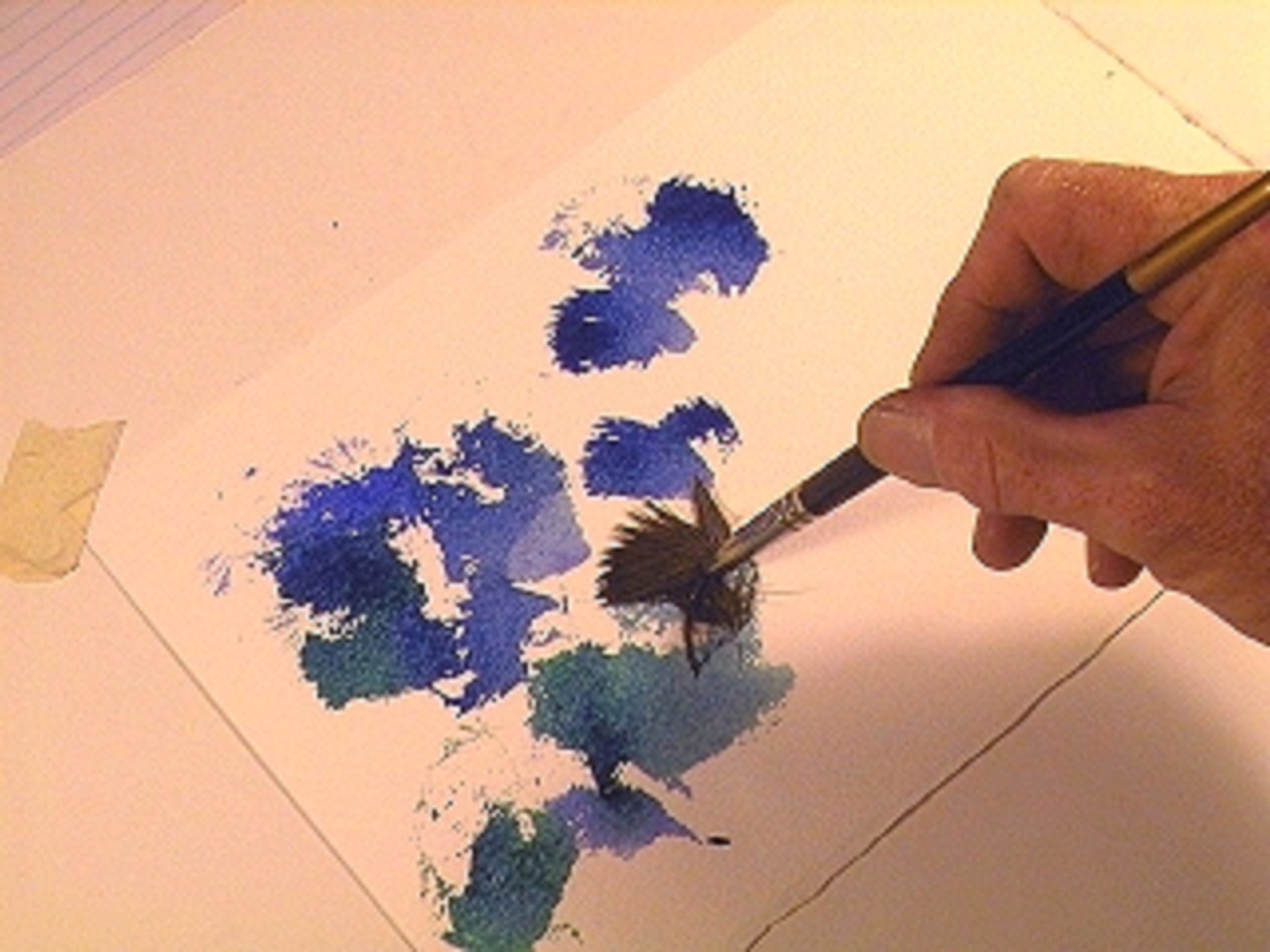 Continue poking around on your paper, adding a twist or spin to your stroke by rolling your brush in your fingers as you paint. Experiment with angles of attack to find the best spreading point for the brush you are using. Consciously try to shape the hairs as you press a stroke into the paper. Give it a little wiggle while the brush hairs rest on the paper to make them align. Try a slow motion stroke—tipping your brush so the pressure point is on the tips of the hairs. This presses more paint into your paper, making a more defined stroke.
Continue poking around on your paper, adding a twist or spin to your stroke by rolling your brush in your fingers as you paint. Experiment with angles of attack to find the best spreading point for the brush you are using. Consciously try to shape the hairs as you press a stroke into the paper. Give it a little wiggle while the brush hairs rest on the paper to make them align. Try a slow motion stroke—tipping your brush so the pressure point is on the tips of the hairs. This presses more paint into your paper, making a more defined stroke. 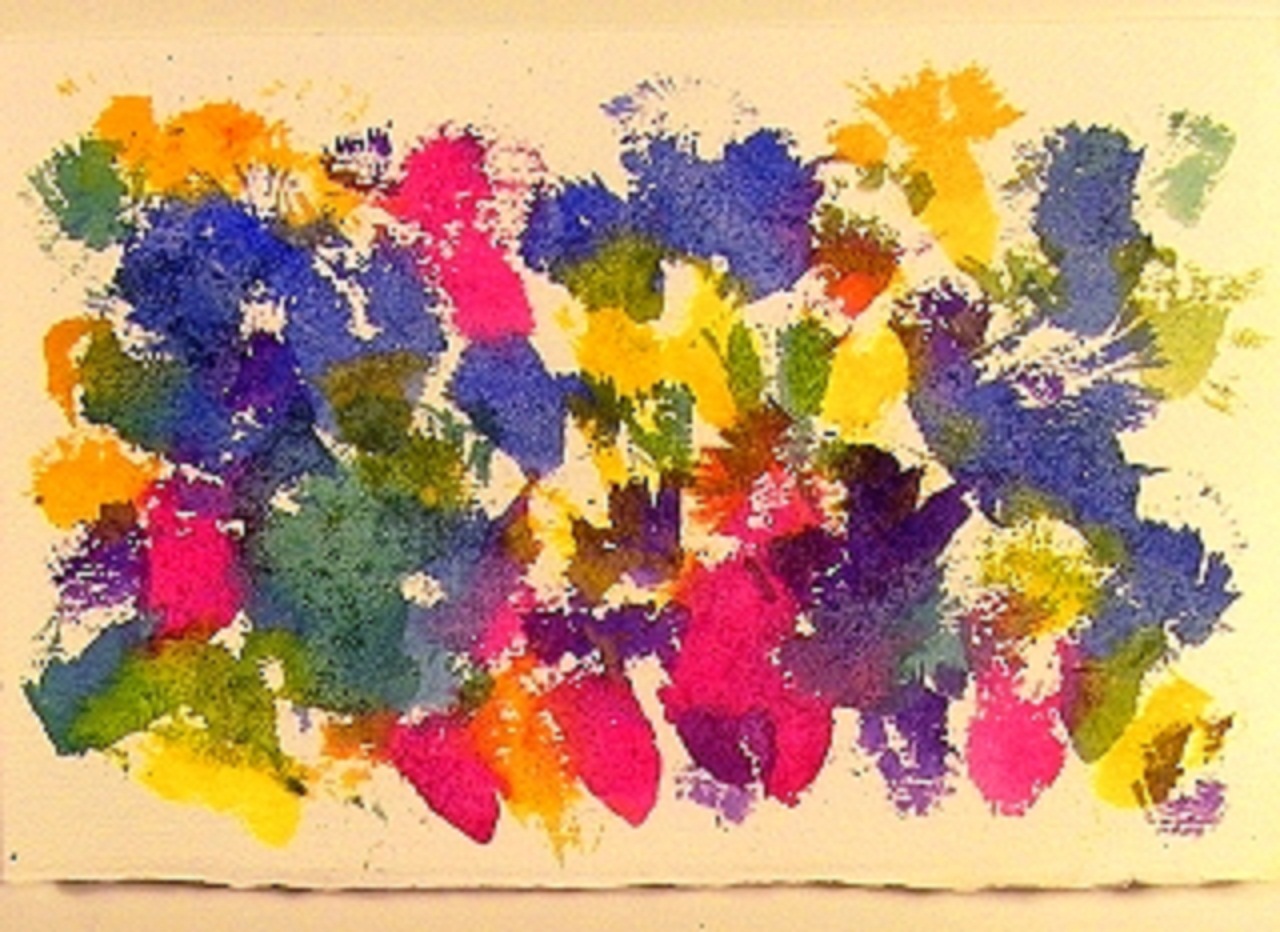 Rinse and switch colors and/or brushes. Continue to practice spreading and twisting your brush, building texture across the paper. Look for organic shapes and textures as you allow your strokes and colors to overlap and blend. This is another example of a what is considered a painterly stroke. The "Stab" technique works best in conjunction with other brush strokes unless all you need is texture for your painting. Be kind to your brush afterwards.
Rinse and switch colors and/or brushes. Continue to practice spreading and twisting your brush, building texture across the paper. Look for organic shapes and textures as you allow your strokes and colors to overlap and blend. This is another example of a what is considered a painterly stroke. The "Stab" technique works best in conjunction with other brush strokes unless all you need is texture for your painting. Be kind to your brush afterwards. 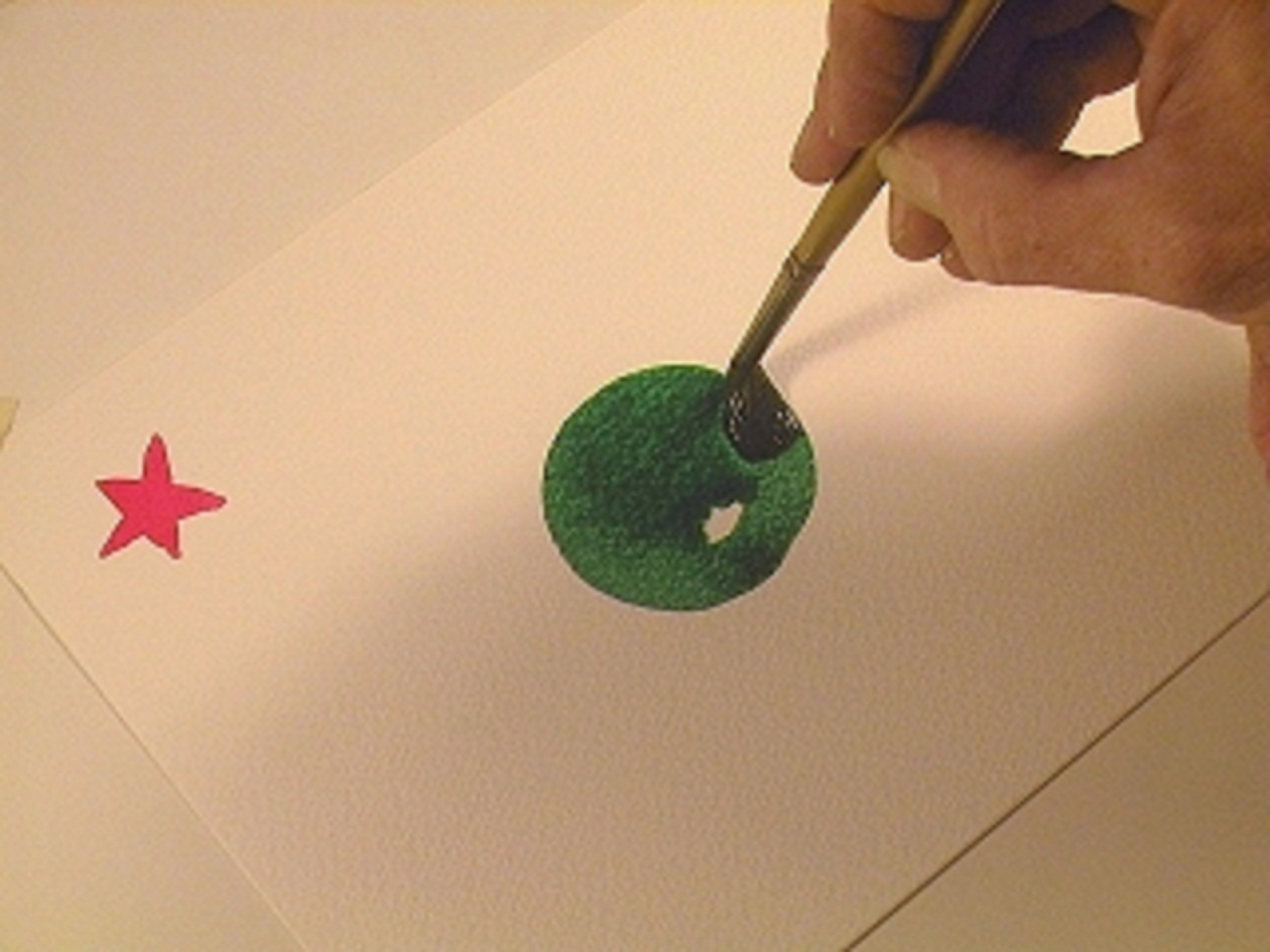
Cutting Edges
This exercise utilizes your skills in drawing and your brush control in painting edges of washes in various shapes. Use geometric shapes in a variety of sizes and colors, using the largest brush possible for each size. You have to know how to paint the shapes you see before you. Since we all know how a circle, square, triangle, rectangle, or star looks, you'll know immediately if you've succeeded. Painting shapes requires the use of several brush techniques you can develop simply by practicing them. I did. Start by mixing up several pools of primary colors to work with. For the larger shapes I'm using a round #8 Grumbacher Watercolor Classic red sable brush. I added smaller shapes with a round #4 Kolonok 1001 Series Kolinsky sable. From my experience, "cutting an edge" is a sign painter's term for pulling a clean line of paint with your brush. A clean line being a line that is smooth and flowing with no irregularities. Notice the twisting motion controlling the upstroke of the circle shape. 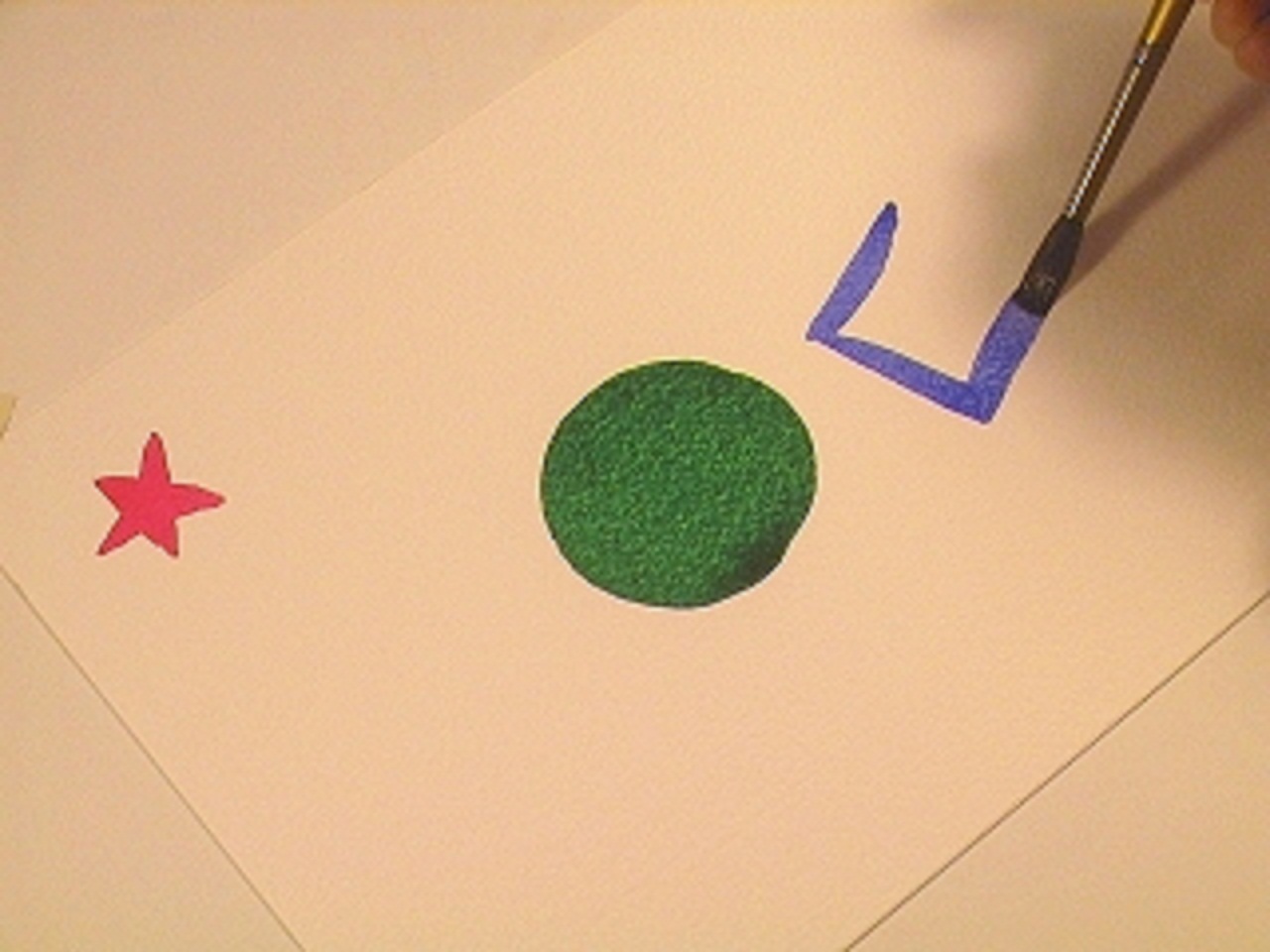 Consider each shape before you start to paint. What is the minimum amount of brush strokes needed to create the edge of the shape? A circle? One or two strokes? Triangle? Three. Square. Uh, four. You get the idea. The five-pointed stars were done several ways. I cut both edges of each arm on some (ten strokes), tried five thick 'n' thin strokes, and drew a star doodle: one stroke, five intersecting lines. If your brush is too full to get a proper point, touch it on a sponge, tissue, or towel to remove excess paint before you start.
Consider each shape before you start to paint. What is the minimum amount of brush strokes needed to create the edge of the shape? A circle? One or two strokes? Triangle? Three. Square. Uh, four. You get the idea. The five-pointed stars were done several ways. I cut both edges of each arm on some (ten strokes), tried five thick 'n' thin strokes, and drew a star doodle: one stroke, five intersecting lines. If your brush is too full to get a proper point, touch it on a sponge, tissue, or towel to remove excess paint before you start. 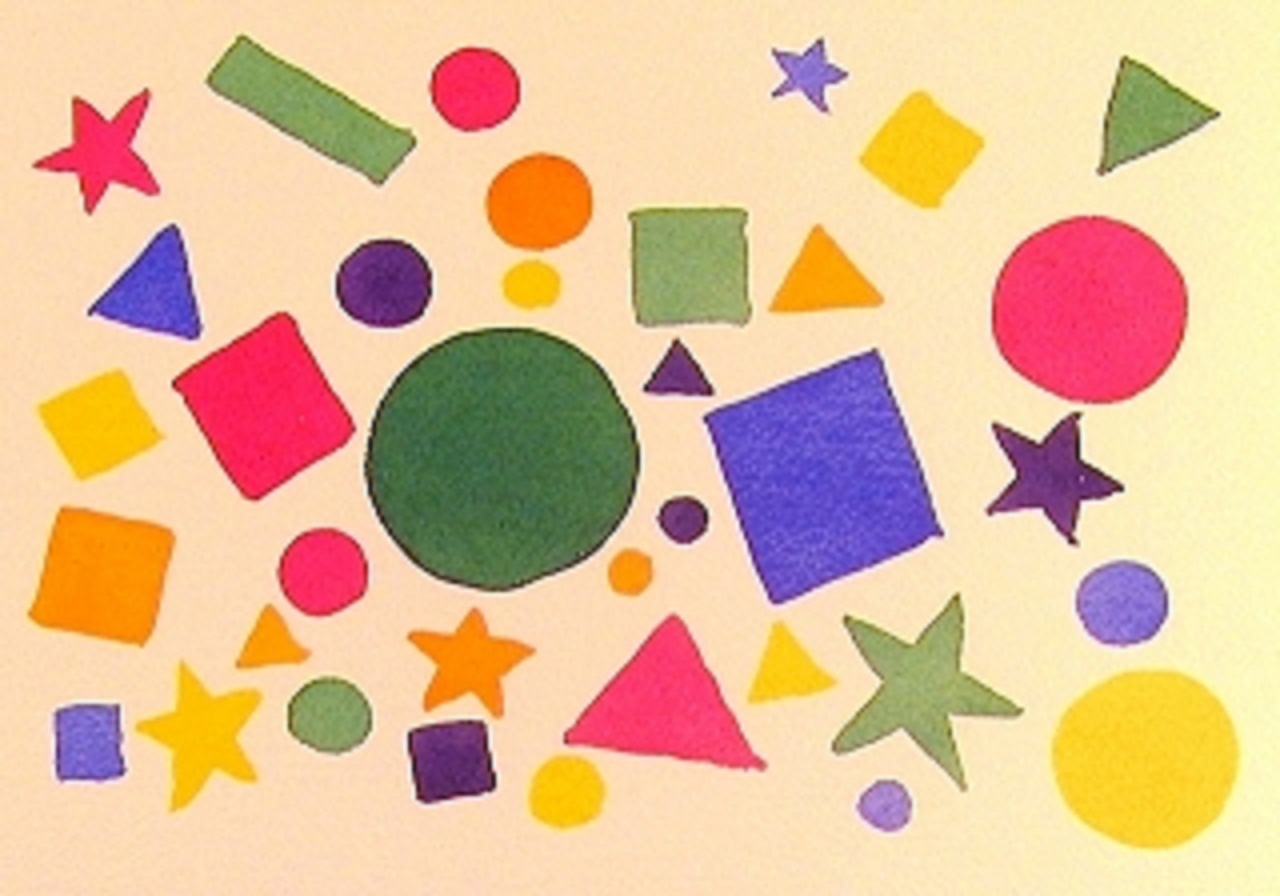 While you have one color in your brush try painting all the different shapes across the page in that one color. Rinse your brush out, switch colors, and repeat. For sharp corners, use the tip of your brush and start the brush stroke at the corner point of the shape. For circular shapes, start your curving brush stroke inside the edge of the shape and pull the stroke into position before continuing the stroke. Switch to a smaller brush and try some mini shapes. Happy painting!
While you have one color in your brush try painting all the different shapes across the page in that one color. Rinse your brush out, switch colors, and repeat. For sharp corners, use the tip of your brush and start the brush stroke at the corner point of the shape. For circular shapes, start your curving brush stroke inside the edge of the shape and pull the stroke into position before continuing the stroke. Switch to a smaller brush and try some mini shapes. Happy painting!



